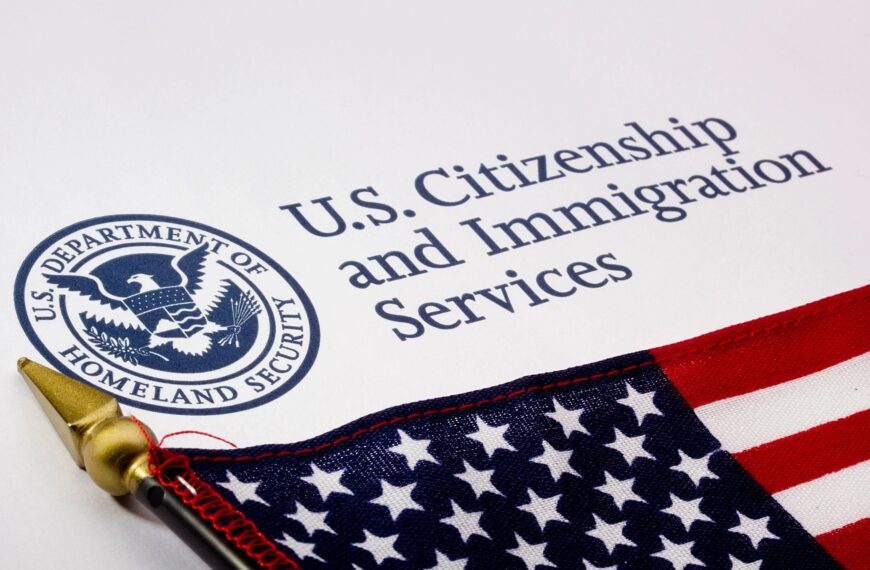The Hierarchy of (Ex-Pat) Needs: Chapter 3

The Hierarchy of (Australian Expat) Needs
There is a saying: “You do not choose New York – New York chooses you”. There are numerous examples of Australians who arrive in the US with great expectations, yet return to Australia within a few months, shattered emotionally and financially drained.
In our book Moving to the US for Aussies, we discuss a check list of basic needs before moving to the United States. By definition these are only the minimum requirements, and only the first step in what can be a lengthy and for some, a painful process.
In many of these cases, it is either a sense of isolation from family and friends, or failing to be adequately prepared for a very different New York from what they expected.
Not having a solid plan in place before arriving in the U.S. is typically the No1 reason why Australians return home early.
This book assumes that you are not moving to the US just to survive: You are here to be successful, to compete against the world’s best in your field.
New York is a process and having the basics in place is only the first step. Typically, Australians take around eighteen months to feel relatively comfortable that they have all of their bases covered; but what if there was a way to do it in less than 90 days?
Understanding the Expat Continuum
Abraham Maslow postulated that many human needs are psychological. In the context of New York, you may have found work, but if you are fearful of where you live, feel isolated or culturally disenfranchised, this City will grind you into submission inside a month.
Below is a visualization of an Aussie expats hierarchy of needs.

Humor aside, the model highlights that without meeting certain needs, we risk failing to move to the next level.
The concept of an Expat Continuum is a very different way of looking at life in New York, but it can assist you in understanding that being successful, is more than finding a job and an apartment.
This Capability Maturity approach will resonate with any project manager or managing consultant. For everyone else, like the Hierarchy of Needs, you need to identify where you are in the model to understand how to get to the next level.
For the purposes of this document, we will discuss the first three levels: Basic, Reactive and Planned.
Level 1: Basic
An expat operating at a Level 1 maturity is typically ad hoc and chaotic in their approach to living in the US. The expat typically does not have a stable residence and frequently relies on public social media for information.
Success with these expats depends on the accuracy of information they receive, or the generosity of other Australians, to meet their physiological needs. Level 1 expats often find medium term accommodation, but due to unrealistic budgeting, what they can afford falls well short of their expectations.
Expats operating at this Basic level, often fail to find work due to poor planning, false assumptions, bad information or a less than focused approach to a very competitive job market.
Relying on international travel insurance in lieu of a US Health Insurance Plan is the hallmark of an expat operating at this level.
Level 2: Reactive
Expats who are operating at Level 2 are characterized by having their basic living needs in place, however they measure their success on how well they are able to respond to unexpected challenges, or changes in their personal circumstances.
Expats operating at this level view overcoming expat challenges in a project mindset vs a proactive, operational mindset. They typically do not set aside savings and still heavily rely on free advice on social media.
They do not plan for “what if” scenarios, and any changes in their circumstances can have significant impact on their ability to remain in the US.
The hallmark of an expat operating at Level 2 is their quality of life is dependent on how much money is left over after paying rent.
Level 3: Planned
At Level 3, an expat has exceeded his or her basic needs and now looks to improving their quality of life. This positions them to focus on advancing their social, professional and charitable goals in the US.
In addition to the law of the land, they have a very clear understanding of compliance and their responsibilities under US tax and immigration law, as well as how their Australian Income and Assets are treated under US law.
Many of these requirements are proactively outsourced and managed by industry professionals, so as to ensure timely filings and compliance.
Level 3 expats are free to focus on growing their business, advancing their career or pursuing personal relationships, and they have planned for multiple “what if” strategies should their circumstances change.
The hallmark of a Level 3 expat is the their mindset of outsourcing challenges to professionals rather than a DIY approach.
A Tale of Two Aussies
There are two expats, one is employed and shares an apartment as she cannot afford to live alone, the other is sofa surfing to keep a roof over his head whilst he is looking for work.
One may appear to be doing better than another, but they are both operating at the same level.
Granted, savings may be finite for someone who is not working, but unexpected costs can suddenly tap into the gainfully employed’s savings, such a tax bill, or more recently having to repay their Australian Student Loan.
Both of these Aussies may also be unaware of their expat tax and filing requirements simply because they do not have access to professional knowledge, and or they were given bad (free) advice to begin.
In both examples, these expats are operating at Level 2 at best. Whether it is spending income or savings, both are only meeting their basic needs and neither has, nor may be able to plan for changing circumstances.
If for example they did not file a Form AR 11 with USCIS within 10 days when they last changed address, they could face fines and or deportation!
Further, unemployment is always a possibility in a country with At-will employment laws and without savings you can find yourself on a return flight to Australia sooner than expected.
The challenges for the Aussie seeking work may be obvious, but for a working couple with a family, they may have miscalculated their future expenses such as education costs given that their apartment is in a not so great school district and they will now have to pay upwards of $20,000 annually for private school tuition.
Moving on Up (the Continuum)
Typically, it takes an expat six months of trial and error to move up one level of maturity. Unfortunately, over this period of time, many expats learning curve can be quite painful.
The pain can stem from making rookie mistakes in financial, business, career or in personal matters. In the Australian Community this learning curve is referred to as “accumulating unnecessary scar tissue”.
Small changes in circumstances can have significant impact on your ability to stay in the US, so identifying, mitigating and retiring risks is an ongoing process.
You may be forgiven if you are breaking into a cold sweat about now, this is normal for anyone not operating at or above Level 3!
Gotchas (and where to find some of them).
Americans who are in Australia are given ample warning of certain circumstances that could unexpectedly cut their stay short. Below are two less than ambiguous examples.

Unfortunately, the US does not reciprocate by clearly labeling all of the dangers that can befall an expat living in the US, particularly New York.
In a recent webcast, the Australian Community covered ten such gotchas. Not every challenge facing expats can be documented, but feedback from our members, many of whom believed they were at Level 3, was that the information was highly valuable and that they were unaware of many of the answers.
The Top 10 Questions asked by Australians living in New York was made possible by the collective experience of our organization. The ability to tap into our members collective experience, and share it through our social media has enormous value for expats living in the US.
Aggregating and sharing the collective experience of our membership is a major goal of our organization. Hosting educational events and producing rich media presentations are part of our charitable mission.
Some of the answers captured in the thirty minute video revealed a number of common mistakes (and incorrect assumptions) made by Australian expats living in New York and the broader US.
Level 3 within 90 days?

Within the Australian Community’s private network, there are Accounting and Tax professionals, Financial Advisors, Immigration, Legal, Trust and Estate Lawyers, Real Estate Brokers, Recruiters as well as access to expat Banking and Credit programs.
Within our private network there are resources to accelerate your expat Continuum to Level 3 within 90 days .
However, it is not the availability of professional resources that prevents expats from attaining Level 3 in less than 90 days, it is usually financial resources (or lack thereof) that prolongs the time spent at Level 1 and 2.
To E-3 or not to E-3…
One of the most common example of level 1 behavior is the Do-It-Yourself E-3 visa application. Granted it is a relatively straightforward application, but still there are a high number of applications that are rejected.

If your visa application is rejected, you may also be prevented from returning to the US, so you have to ask is it worth the risk?
Given the E-3 Visa is for professional positions only, your base salary has to start in the $80,000 to $100,000 ball park. The question begs that after an exhausting job search and interview process (beating out dozens of applicants), why would you risk missing out on a career in the US because you dropped the ball during the E-3 application?
If an Immigration attorney is charging in the $2,000 to $3,000 range to process an E-3 application, why would you risk the cornerstone of your move to the US when an attorney’s fee is less than 5% of your first year’s salary?
Think of Legal fees in terms of car insurance. Some people pay tens of thousands of dollars in premiums, yet never have an accident. The value they receive in return is that they can sleep soundly with the knowledge that if anything happened, they are covered.
Australians are risk takers and especially those who have made the decision to move to the US. However as we often say in this book, your Health, Finances and Liberty are areas where you never take unnecessary risks.
The sooner you can move from relying on a DIY approach, to outsourcing to a professional when faced with expat challenges, the less time you will spend at Level 1 and 2 on the Expat Continuum.
The information in this book is not a silver bullet to preventing every challenge an expat will face when moving to the US. However, in conjunction with access to ethical, professional advice through our private network, most expats will be able to quickly identify and mitigate many of those challenges.
Members can read more by logging into our Private Social Network.
Click Here to read Chapter 4: The Inconvenient Truth
Click here to read “Moving to the US for Aussies” from the beginning
Before you send money Overseas!
Use this Currency Converter to gauge how much money you could save over your existing FOREX service by accessing The Australian Community’s Preferred OFX Rate.
Currencies can fluctuate by the minute. This Converter is indicative of the Preferred OFX Rate at this time.
However, once you register and access our Preferred OFX Rate, you will see the current converted rate, and the converted amount before making your transfer.
About The Australian Community
Founded in 2011, we connect more Australians in America.
If you are a professional Australian taking your career to the next level, or the U.S. is the next step in your company’s global expansion, we can connect you to all of the resources you need for success in America.
Did you find this article helpful? Make a Donation!
The Australian Community is a 501(c)(3) organization, and all donations are fully tax-deductible under the IRS Code.
Join The Australian Community.
Learn more about the benefits of joining The Australian Community in America.








